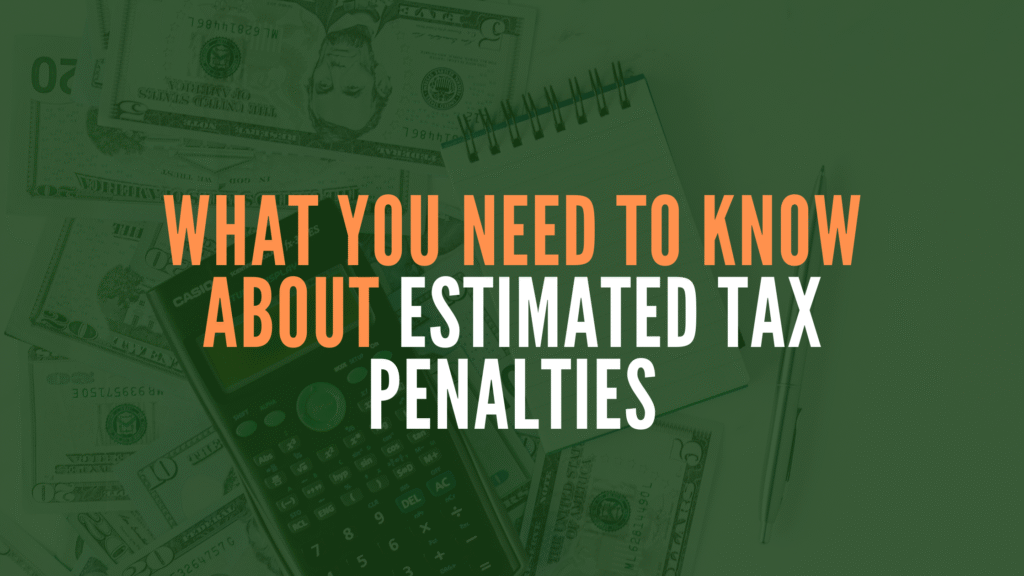The U.S. operates under a “pay as you go” tax system, meaning income taxes must be paid to the IRS throughout the year as income is earned. These payments can be made through withholding, estimated tax payments, or a combination of both.
Failing to pay enough tax during the year can result in costly penalties, especially for self-employed individuals, retirees, and others receiving income without sufficient tax withholding.
What Is the Estimated Tax Penalty?
If you don’t pay enough tax each quarter, the IRS will impose an interest-based penalty on the underpaid amount for that period.
The current penalty rate is 8 percent, the highest it has been in 17 years. Because this penalty is not tax-deductible, the true financial impact can be even greater.
This penalty applies to:
- Self-employed individuals
- C corporations that fail to meet quarterly requirements
- Taxpayers with income not subject to withholding (e.g., retirement distributions, dividends, interest, capital gains, rents, and royalties)
Employees with sufficient tax withheld from wages generally do not need to worry about this penalty.
How to Avoid the Penalty
The IRS provides clear “safe harbor” rules to help you stay compliant and penalty-free. Here’s how to qualify:
For Individuals:
You must pay at least one of the following during the year:
- 90 percent of your current year’s total tax liability, or
- 100 percent of your prior year’s tax liability (or 110 percent if your adjusted gross income exceeds $150,000, or $75,000 if married filing separately)
For C Corporations:
You must pay:
- 100 percent of the tax shown on the return for the current year, or
- 100 percent of the tax shown on the return for the prior year
(Note: Large corporations generally cannot rely on the prior-year rule.)
Important Note on Timing
Estimated tax payments are due quarterly. The IRS applies the penalty separately to each payment period, meaning:
- You may still face a penalty even if you are due a refund when filing your return
- You cannot offset a missed or underpaid quarter by making a larger payment later in the year
Alternative Calculation Methods
Taxpayers with fluctuating income may qualify to use alternate methods such as the annualized income installment method. These approaches can more accurately align tax payments with income, but they are complex and require proper planning and documentation.
At BASC Expertise, we help clients evaluate the best approach based on their income sources, business activity, and filing history.
With the current penalty rate at 8 percent and climbing, avoiding estimated tax penalties has never been more important. Whether you’re self-employed, running a corporation, or receiving non-wage income, proactive tax planning is essential.
At BASC Expertise, we guide clients through estimated tax strategies, withholding optimization, and quarterly planning to help minimize taxes and penalties.
Have questions about estimated taxes or quarterly payments?
Contact BASC Expertise today for a personalized tax planning consultation.
bascexpertise.com/contact | Gilbert, AZ | (480) 355-1398

